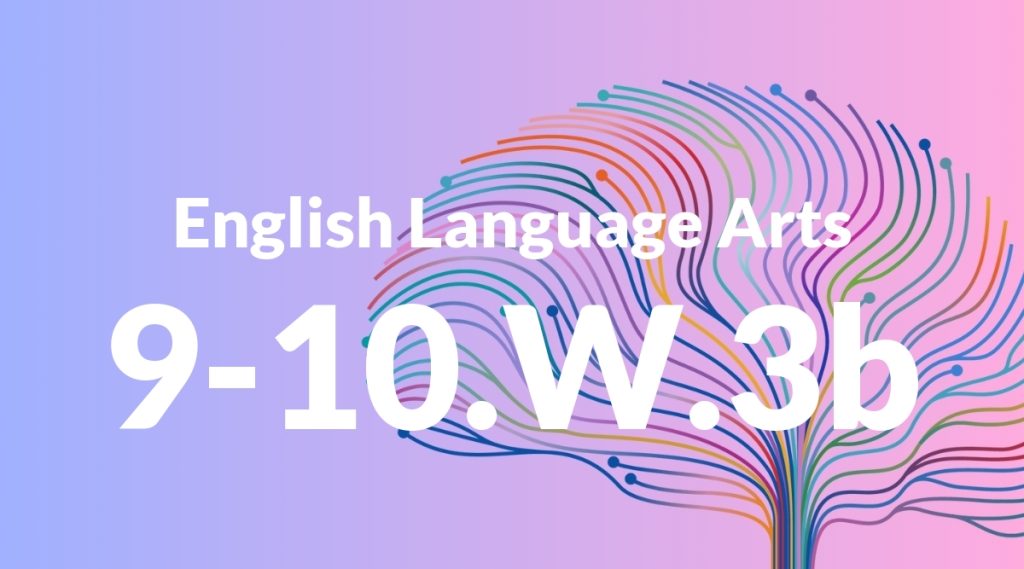Standard: 9-10.W.3b – Use narrative techniques, such as dialogue, pacing, description, reflection, and multiple plot lines, to develop experiences, events, and/or characters.
Grade level: Grade 9-10
Subject: English Language Arts
Domain: Writing
Teacher Overview
This standard focuses on the use of various narrative techniques to enrich writing. It is crucial for helping students develop their storytelling skills, making their narratives more engaging and dynamic. Mastery of this standard will enhance students’ ability to create vivid and compelling stories. Students should have a foundational understanding of narrative elements such as plot, character, setting, and conflict. They should also be comfortable with basic writing conventions like grammar, punctuation, and sentence structure.
Mastering this standard will enable students to create more complex and engaging narratives, using advanced techniques to add depth to characters and plot, and to craft immersive and compelling stories.
Common Misconception 1
A common misconception is that using too many narrative techniques will make writing confusing. This is incorrect because when used effectively, narrative techniques can enhance the clarity and engagement of the story.
Intervention 1
To address this misconception, encourage students to start by integrating one or two techniques at a time and to seek feedback from peers or teachers to ensure their writing remains clear and engaging.
Common Misconception 2
Another misconception is that narrative techniques are only applicable to fiction writing. In reality, these techniques can also be used effectively in non-fiction writing, such as memoirs, biographies, and journalistic pieces.
Intervention 2
To remediate this, provide students with examples of narrative techniques used in non-fiction writing. Discuss how these techniques can add depth and interest to factual writing.
Prerequisite Knowledge
Students should have a basic understanding of narrative structure, including the concepts of plot, character, setting, and conflict. They should also be familiar with basic writing conventions such as grammar, punctuation, and sentence structure.
Subsequent Knowledge
After mastering this standard, students will be able to create more complex and engaging narratives. They will be able to use advanced narrative techniques to add depth to their characters and plot, and to create more immersive and compelling stories.
Instructional Activities
- Writing a short story using dialogue and pacing to develop characters.
- Creating a screenplay with multiple plot lines.
- Developing a personal narrative that includes reflection and description.
- Writing a scene for a play using dialogue and description.
- Crafting a role-playing game scenario that includes multiple plot lines and character development.




